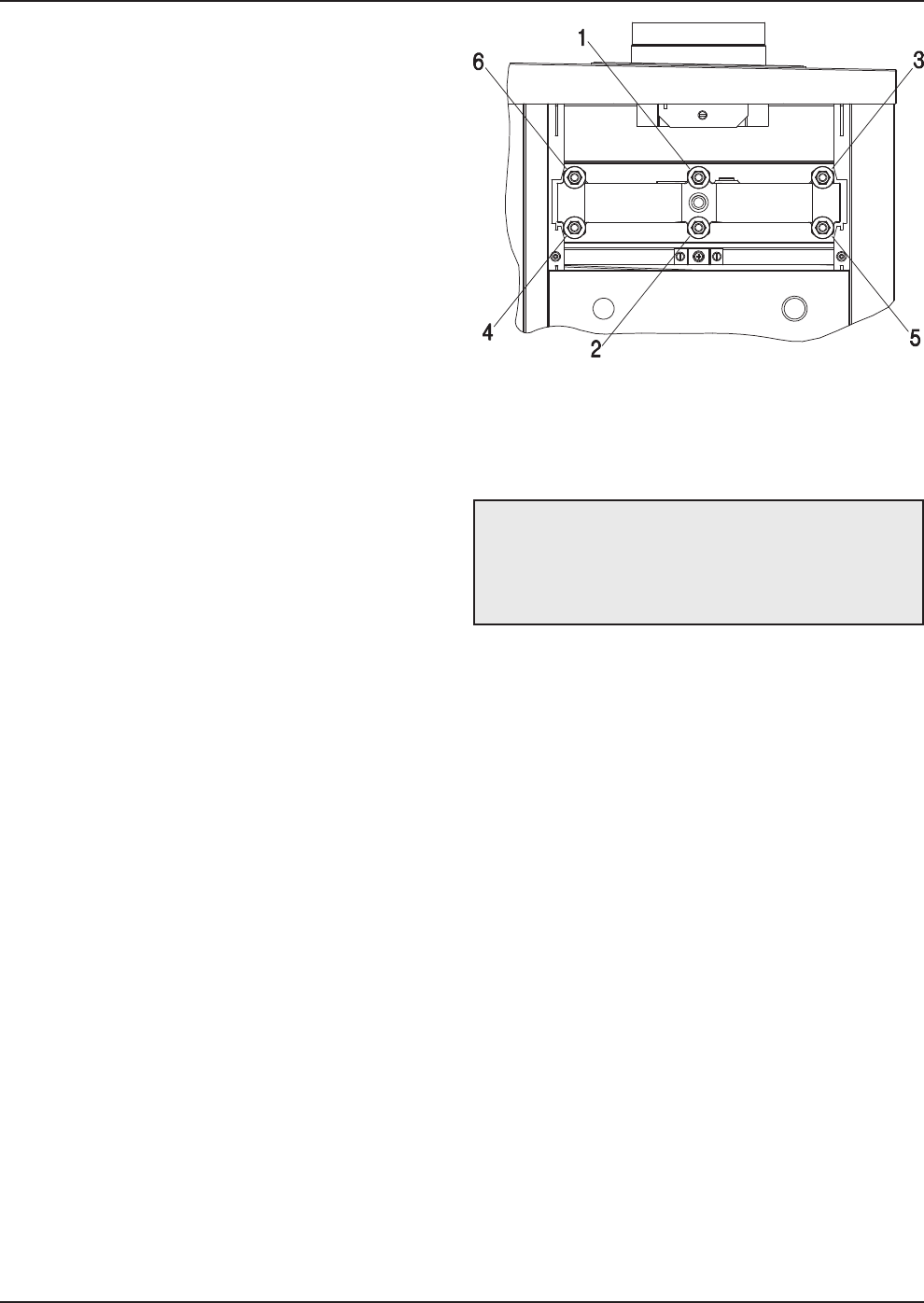
13
WARNING: Pressure relief valve discharge piping
must be piped near the floor and close to a drain to
eliminate the potential of severe burns. Do not pipe
to any area where freezing could occur. Refer to
local codes.
Reversing Water Connections
Follow these instructions to change the water connec-
tions from the left-hand side (standard) to the
right-hand side.
1. Disconnect all electrical power from the heater (if
applicable).
2. Label all electrical connections and conduit lines.
This may include the flow switch, low water cut-off
probe and/or pump.
3. Disconnect or isolate the main gas pipe from the
heater (if applicable).
4. Remove both in/out and return header access
panels by removing all sheet metal screws.
5. Remove all plumbing fittings to the header. This
will include both inlet and outlet water pipe unions
and the pressure relief valve and drain piping.
6. Remove limits, control bulbs and/or sensors.
7. Remove the six flange nuts and the in/out header
from the left-hand side.
8. Remove the six flange nuts and the return header
from the right-hand side.
9. Remove the header stud bolts from each tube
sheet.
10. Reverse the headers and stud bolts to the new
location.
11. Install NEW red beveled O-rings flush against both
tube sheets with the bevel facing outward.
12. Push the header firmly against the O-rings. Install
and tighten the flange nuts onto the stud bolts until
finger tight.
13. Slowly tighten the flange nuts, starting from the
center nut (number 1) in Fig. 9 and working
sequentially around the header as indicated.
Torque all nuts to 25 ft/lb. DO NOT OVER-TIGHT-
EN.
14. Re-route the capillary(s), wiring, etc., to the new
location, adding thermal paste and shim to the
capillary well.
Fig. 9: Torque Sequence
Relief Valve Piping
